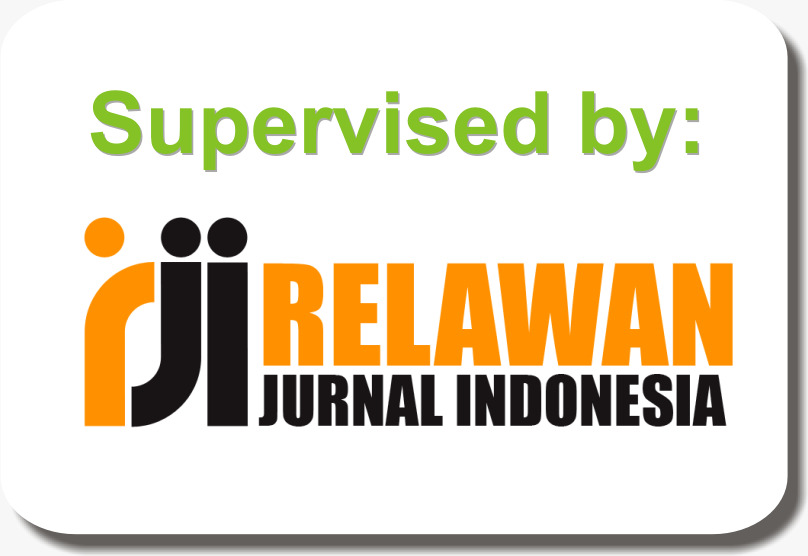Analysis of Physical Security and Comprehensive Approach Based on Artificial Intelligence Method
Keywords:
Physical security, Artificial Intelligence, Cybersecurity, Information securityAbstract
Cybersecurity sets as an emerging issue in the recent years, in line with the development of increasingly sophisticated digital technology. Cybersecurity are divided into several areas that are equally important and interconnected to one another. One of the areas of cybersecurity is physical security. Physical security involves safeguarding personnel, hardware, software, networks, and data against physical actions and incidents that may lead to significant loss or harm to an organization, agency, or institution. Several methods are conducted to secure the area physical assets, and AI-based method is currently well-known for its effectiveness. In this research, we aim to proposed an AI-based method to improve the physical security. This research is conducted to analyze and propose a method in the area of physical security. The goals are to secure the physical assets, predict potential attacks, and manage the vulnerable risks. The results of this research are the proposed prototype to secure physical area of information system and able to detect unusual activities to prevent incident that can be harmful of physical sources.
References
DataIndonesia.id, “BSSN Catat 370,02 Juta Serangan Siber ke Indonesia pada 2022,” 2023. https://dataindonesia.id/internet/detail/bssn-catat-37002-juta-serangan-siber-ke-indonesia-pada-2022 (accessed Feb. 26, 2024).
S. Zeadally, E. Adi, Z. Baig, and I. A. Khan, “Harnessing artificial intelligence capabilities to improve cybersecurity,” IEEE Access, vol. 8, pp. 23817–23837, 2020, doi: 10.1109/ACCESS.2020.2968045.
J. Jain, “Artificial intelligence in the cyber security environment,” Artif. Intell. Data Min. Approaches Secur. Fram., pp. 101–117, 2021, doi: 10.1002/9781119760429.ch6.
S. Kumar, U. Gupta, A. K. Singh, and A. K. Singh, “Artificial Intelligence: Revolutionizing cyber security in the Digital Era,” J. Comput. Mech. Manag., vol. 2, no. 3, pp. 31–42, 2023, doi: 10.57159/gadl.jcmm.2.3.23064.31.
Y. Jun, A. Craig, W. Shafik, and L. Sharif, “Artificial Intelligence Application in Cybersecurity and Cyberdefense,” Wirel. Commun. Mob. Comput., vol. 2021, 2021, doi: 10.1155/2021/3329581.
M. F. Ansari, B. Dash, P. Sharma, and N. Yathiraju, “The Impact and Limitations of Artificial Intelligence in Cybersecurity: A Literature Review,” Ijarcce, vol. 11, no. 9, pp. 81–90, 2022, doi: 10.17148/ijarcce.2022.11912.
P. Durko, “Advanced Testing of Physical Security Systems through AI/ML,” 2021, doi: 10.2172/1831133.
R. Gupta, S. Tanwar, F. Al-Turjman, P. Italiya, A. Nauman, and S. W. Kim, “Smart Contract Privacy Protection Using AI in Cyber-Physical Systems: Tools, Techniques and Challenges,” IEEE Access, vol. 8, pp. 24746–24772, 2020, doi: 10.1109/ACCESS.2020.2970576.
W. Matsuda, M. Fujimoto, T. Aoyama, and T. Mitsunaga, “Cyber Security Risk Assessment on Industry 4.0 using ICS testbed with AI and Cloud,” 2019 IEEE Conf. Appl. Inf. Netw. Secur. AINS 2019, pp. 54–59, 2019, doi: 10.1109/AINS47559.2019.8968698.
U. Cali, F. O. Catak, and U. Halden, Trustworthy cyber-physical power systems using AI: dueling algorithms for PMU anomaly detection and cybersecurity, vol. 57, no. 7. Springer Netherlands, 2024. doi: 10.1007/s10462-024-10827-x.
B. Ali and A. I. Awad, “Cyber and physical security vulnerability assessment for IoT-based smart homes,” Sensors (Switzerland), vol. 18, no. 3, pp. 1–17, 2018, doi: 10.3390/s18030817.
B. Wan, C. Xu, R. P. Mahapatra, and P. Selvaraj, “Understanding the Cyber-Physical System in International Stadiums for Security in the Network from Cyber-Attacks and Adversaries using AI,” Wirel. Pers. Commun., vol. 127, no. 2, pp. 1207–1224, 2022, doi: 10.1007/s11277-021-08573-2.
A. Ahmed Jamal, A. A. Mustafa Majid, A. Konev, T. Kosachenko, and A. Shelupanov, “A review on security analysis of cyber physical systems using Machine learning,” Mater. Today Proc., vol. 80, no. xxxx, pp. 2302–2306, 2023, doi: 10.1016/j.matpr.2021.06.320.
R. Almajed, A. Ibrahim, A. Z. Abualkishik, N. Mourad, and F. A. Almansour, “Using machine learning algorithm for detection of cyber-attacks in cyber physical systems,” Period. Eng. Nat. Sci., vol. 10, no. 3, pp. 261–275, 2022, doi: 10.21533/pen.v10i3.3035.
R. Qi, S. Ji, J. Shen, P. Vijayakumar, and N. Kumar, “Security preservation in industrial medical CPS using Chebyshev map: An AI approach,” Futur. Gener. Comput. Syst., vol. 122, pp. 52–62, 2021, doi: 10.1016/j.future.2021.03.008.
A. Attkan and V. Ranga, “Cyber-physical security for IoT networks: a comprehensive review on traditional, blockchain and artificial intelligence based key-security,” Complex Intell. Syst., vol. 8, no. 4, pp. 3559–3591, 2022, doi: 10.1007/s40747-022-00667-z.
Downloads
Published
How to Cite
Issue
Section
License
Copyright (c) 2025 Siti Alvi Sholikhatin, Alif Nur Fadilah, Rashif Syaddad

This work is licensed under a Creative Commons Attribution-NonCommercial-ShareAlike 4.0 International License.
Copyright in each article belongs to the author.
- The authors admit that RESISTOR Journal as a publisher who published the first time under
 Attribution-NonCommercial-ShareAlike 4.0 International (CC BY-NC-SA 4.0) License.
Attribution-NonCommercial-ShareAlike 4.0 International (CC BY-NC-SA 4.0) License. - Authors can include writing separately, regulate distribution of non-ekskulif of manuscripts that have been published in this journal into another version (eg sent to respository institution author, publication into a book, etc.), by recognizing that the manuscripts have been published for the first time in RESISTOR Journal






1.png)









